Grace Church in New York
Grace Church
in New York
History
Early Days
Grace Church has been an important part of the fabric of New York City for over two hundred years. The first worship service was held on Sunday, December 21, 1808 in a modest building at the corner of Broadway and Rector Street, some two miles south of where the church sits today. For a quarter century, the church flourished in its downtown location, engaging in important community outreach throughout Lower Manhattan, including the founding of a charity school for girls and another for boys in 1823.
With the arrival of the fourth rector, Thomas House Taylor, in 1834, the church came to a crossroads. The city was moving northward and Grace Church risked being left behind by the growing metropolis. Taylor convinced the congregation that the move was vital to the church’s continued growth and vitality. By 1843, a site was chosen and property was purchased in what was then an apple orchard owned by Henry Brevoort, Jr. at Broadway between Tenth and Eleventh Streets.
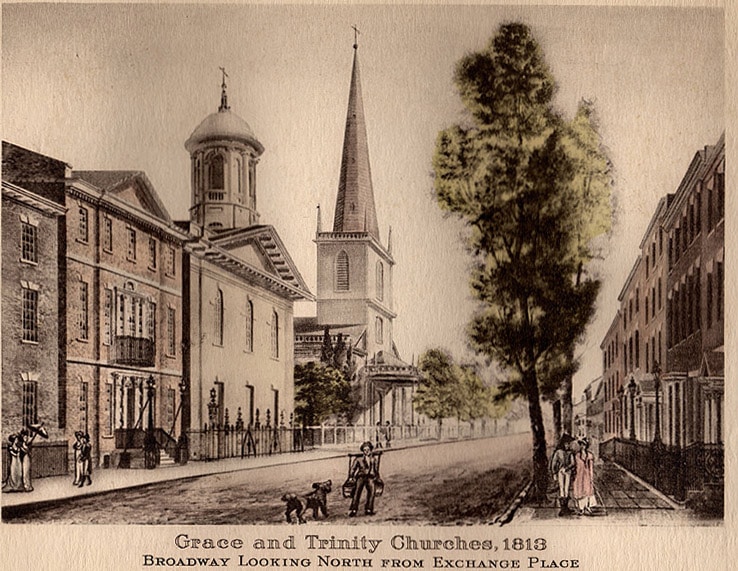
Grace Church at Broadway and Rector Street.
Building A New Home
Choosing an architect for the new church home proved to be a difficult decision, with multiple bids submitted from established designers from around the city. However, the commission was given to a civil engineer who had never built anything so grand. James Renwick, Jr.’s largest previous work had been a part of the Croton Reservoir at 42nd Street; instead of reputation, Renwick had a family background full of talent and influence – not to mention family members on the church’s Vestry.
The rector, Thomas House Taylor, toured Europe extensively looking at church designs around the continent. He returned energized and adamant that the new church would be in the Gothic style. This was an interesting proposition, as there were few examples to reference in the United States. Renwick, however, was undaunted. He poured himself into the project, sketching a Gothic design mainly from books and collected anecdotes. What resulted, by a stroke of skill and a bit of luck, was the Grace Church that we know and love today. The new building was consecrated on March 7, 1846.
Due to significant financial strain, the new church was far less ornate than what stands today. The windows were of lightly tinted glass, not the majestic stained glass windows that tell the Old and New Testament stories with vivid color. Even the original steeple was made of wood, not marble; a marble steeple was eventually added in 1883. Despite this, the congregation was well satisfied and settled down to enjoy their newfound elegance.
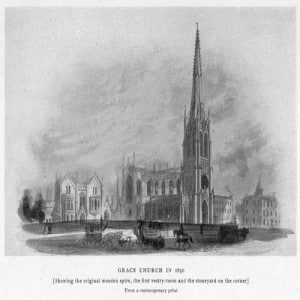
Grace Church from the 1850s.
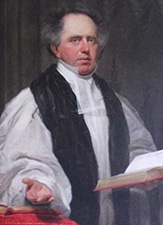
The Rev. Thomas House Taylor
With Status Comes Responsibility
After thirty-three years as rector, Thomas House Taylor died in 1867. The church’s fifth rector, Henry Codman Potter, was resolved that Grace Church would work boldly to improve its community. An early developer of the Social Gospel, Potter was dedicated to serving the burgeoning immigrant population in New York City. He rebuilt Grace Chapel in the 1870s as a free church for the city’s newcomers; the church offered day care, taught employment skills, and provided families with needed recreation.
As Potter continued his work in the community, a wealthy and civically-minded parishioner looked on with increasing respect and admiration. Catharine Lorillard Wolfe was a prolific philanthropist who was a supporter of St. Luke’s Hospital, the Diocese of New York, and the Metropolitan Museum, where she was the first woman to sit on the Museum’s Board of Trustees. She left her mark on Grace Church with a customary flourish. In 1879, she gave the Chantry, a small chapel to be used as a Sunday School; she also provided the funds for the parish house situated between the Church and the Rectory. Her greatest gift was the Te Deum window, a soaring stained glass masterpiece that replaced the original East Window. It was her generosity that inspired other parishioners to follow; within ten years, 36 of the 46 stained glass windows were given.
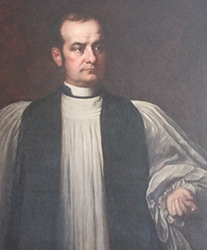
The Rev. Dr. Henry Codman Potter

Catharine Lorillard Wolfe
The Height of Influence
The tenure of William Reed Huntington, the sixth rector of Grace Church, marked the pinnacle of the institution’s destiny and influence. Huntington was a giant in the Episcopal Church, renowned for the Chicago-Lambeth Quadrilateral, his four-point proposal as the basis for the unity of churches, as well as his work on the revision of the Book of Common Prayer. Huntington was a firm believer in the Social Gospel, strengthening Grace Church’s commitment to the community through the building of new chapels around Manhattan and additional classes for the residents of the neighborhood.
William Reed Huntington was also a lover of music. As the century drew to a close, the congregation was increasingly dissatisfied with the music being offered by the church. In 1894, a boy choir was founded and with it a school as a necessary part of the new arrangement. The first Choirmaster of the new era was James Helfenstein; he served until 1922 and brought the fledgling program into maturity. In 1902, a chorister’s house was constructed at Fourth Avenue; in time, the church encompassed the entire block, from 80-102 Fourth Avenue. Today, the buildings are still used by the church and Grace Church School, which became its own legal entity in 2006.
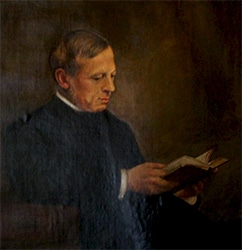
The Rev. William Reed Huntington
The Twentieth Century and Beyond
With the death of William Reed Huntington in 1909, Grace Church called Charles Lewis Slattery as its seventh rector. Slattery was a scholar and a principal architect of the 1928 revision of the Book of Common Prayer. He was succeeded by Walter Russell Bowie, who served from 1923-1939. Bowie’s time at Grace Church was marked by nationwide upheaval; with the Wall Street crash of 1929, the church was left scrambling to live into the Social Gospel, scaling back its ministries due to financial strain. Bowie also clashed with the congregation as another war loomed in the late 1930s; a pacifist, he served a chaplain during World War I and resolved never to speak in favor of war for any reason. This left him at odds with the congregation and the changing mood of the country. He resigned and became a professor at Union Seminary.
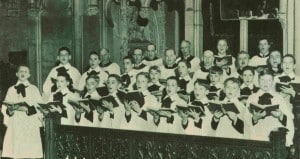
The Choir of Men and Boys in 1940
Following Bowie, Grace called Louis Wetherbee Pitt as the ninth rector, who served until his death in 1959. Dr. Pitt’s time at Grace Church was marked by a neighborhood in steep decline socially and economically. His lasting legacy was the reorganization of the choir school into a modern coeducational elementary school – what we now know as Grace Church School. Benjamin Minifie was called in 1960; Minifie abolished pew rentals and welcomed women onto the Vestry for the first time. During his tenure at Grace Church, The GO Project and the Grace Church Choral Society were also established. These two programs have since become separate entities with a ongoing commitment and presence at Grace Church.
The latter part of the Twentieth Century at Grace Church was a period of transition and discernment, as the congregation searched for a role in the community and the city beyond. There were several rectors called during this time: Christopher Fitzsimons Allison (1975-1981), Harold Elliott Barrett (1980-1991), and Samuel Bassett Abbott (1992-1998). After a protracted interim, James Donald Waring was called in 2004 and became the fourteenth and present rector of Grace Church. He has a strong belief that Grace Church’s glorious architecture, strategic location, and deep legacy of service and worship provide unique possibilities for proclaiming and living the Christian faith today. Our best days are indeed ahead; the Bicentennial Organ was completed in 2013 and major sections of our Landmark Building have been restored. We are committed to serving our community as a steadfast beacon of hope in a hurting world.
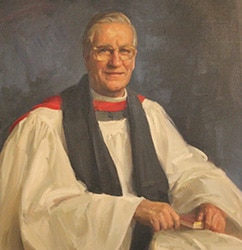
The Rev. Benjamin Minifie

The Rev. J. Donald Waring
Worship Services:
Sunday 9 am, 11am, and 6pm. Wednesday 6 PM.
View the Live Stream on this website, Youtube, Facebook, and Vimeo.
Recordings of previous worship services are also available.
Grace Church
802 Broadway
New York, NY 10003
(212) 254-2000
An Episcopal Church in the Diocese of New York
Grace Church In New York is a not-for-profit organization and is tax-exempt under IRS Section 501(c)(3). Federal tax ID#13-5562327
802 Broadway, New York, NY 10003, (212) 254-2000
Grace Church in New York is a not-for-profit organization and is tax-exempt under IRS Section 501(c)(3).
Federal tax ID#13-5562327.
